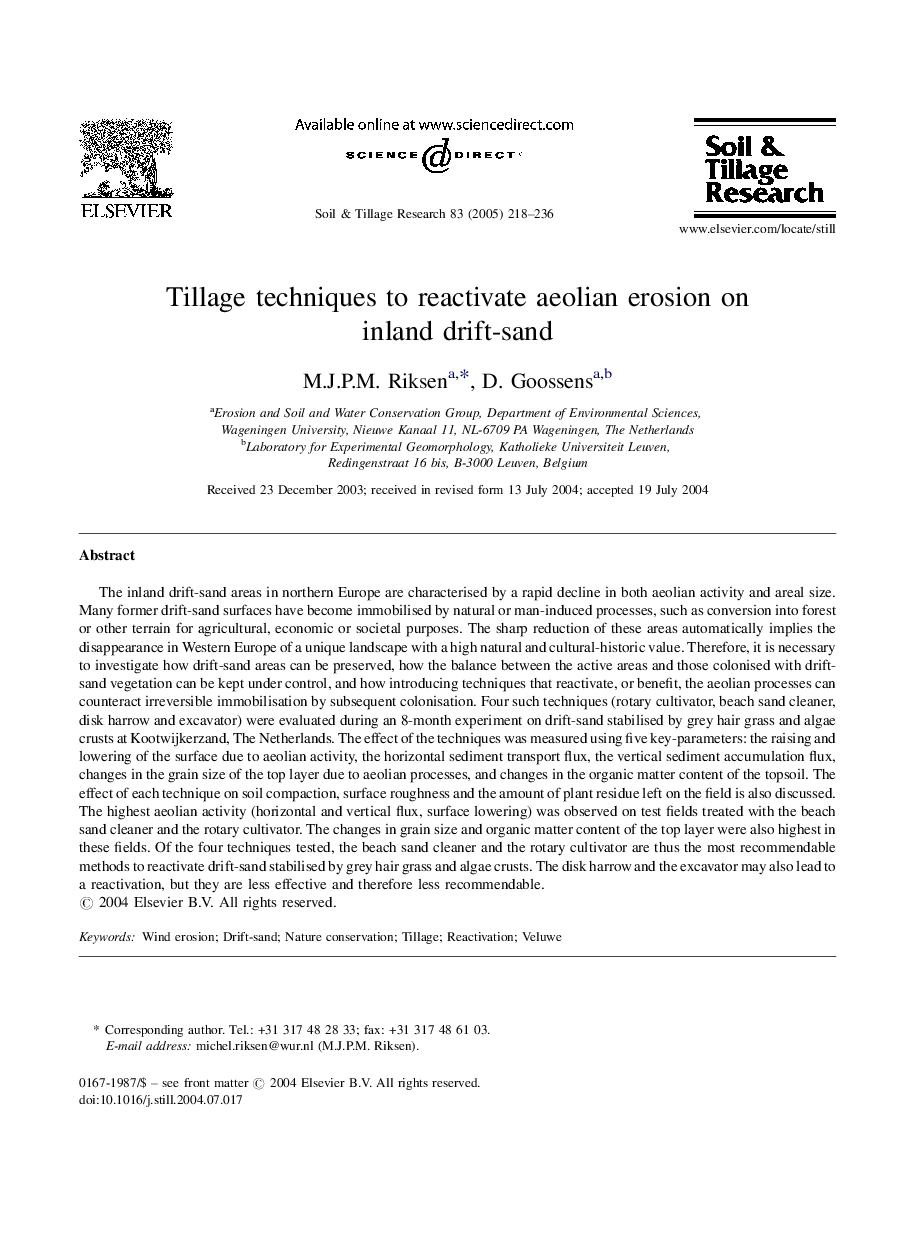| Article ID | Journal | Published Year | Pages | File Type |
|---|---|---|---|---|
| 10295311 | Soil and Tillage Research | 2005 | 19 Pages |
Abstract
The inland drift-sand areas in northern Europe are characterised by a rapid decline in both aeolian activity and areal size. Many former drift-sand surfaces have become immobilised by natural or man-induced processes, such as conversion into forest or other terrain for agricultural, economic or societal purposes. The sharp reduction of these areas automatically implies the disappearance in Western Europe of a unique landscape with a high natural and cultural-historic value. Therefore, it is necessary to investigate how drift-sand areas can be preserved, how the balance between the active areas and those colonised with drift-sand vegetation can be kept under control, and how introducing techniques that reactivate, or benefit, the aeolian processes can counteract irreversible immobilisation by subsequent colonisation. Four such techniques (rotary cultivator, beach sand cleaner, disk harrow and excavator) were evaluated during an 8-month experiment on drift-sand stabilised by grey hair grass and algae crusts at Kootwijkerzand, The Netherlands. The effect of the techniques was measured using five key-parameters: the raising and lowering of the surface due to aeolian activity, the horizontal sediment transport flux, the vertical sediment accumulation flux, changes in the grain size of the top layer due to aeolian processes, and changes in the organic matter content of the topsoil. The effect of each technique on soil compaction, surface roughness and the amount of plant residue left on the field is also discussed. The highest aeolian activity (horizontal and vertical flux, surface lowering) was observed on test fields treated with the beach sand cleaner and the rotary cultivator. The changes in grain size and organic matter content of the top layer were also highest in these fields. Of the four techniques tested, the beach sand cleaner and the rotary cultivator are thus the most recommendable methods to reactivate drift-sand stabilised by grey hair grass and algae crusts. The disk harrow and the excavator may also lead to a reactivation, but they are less effective and therefore less recommendable.
Related Topics
Physical Sciences and Engineering
Energy
Renewable Energy, Sustainability and the Environment
Authors
M.J.P.M. Riksen, D. Goossens,
